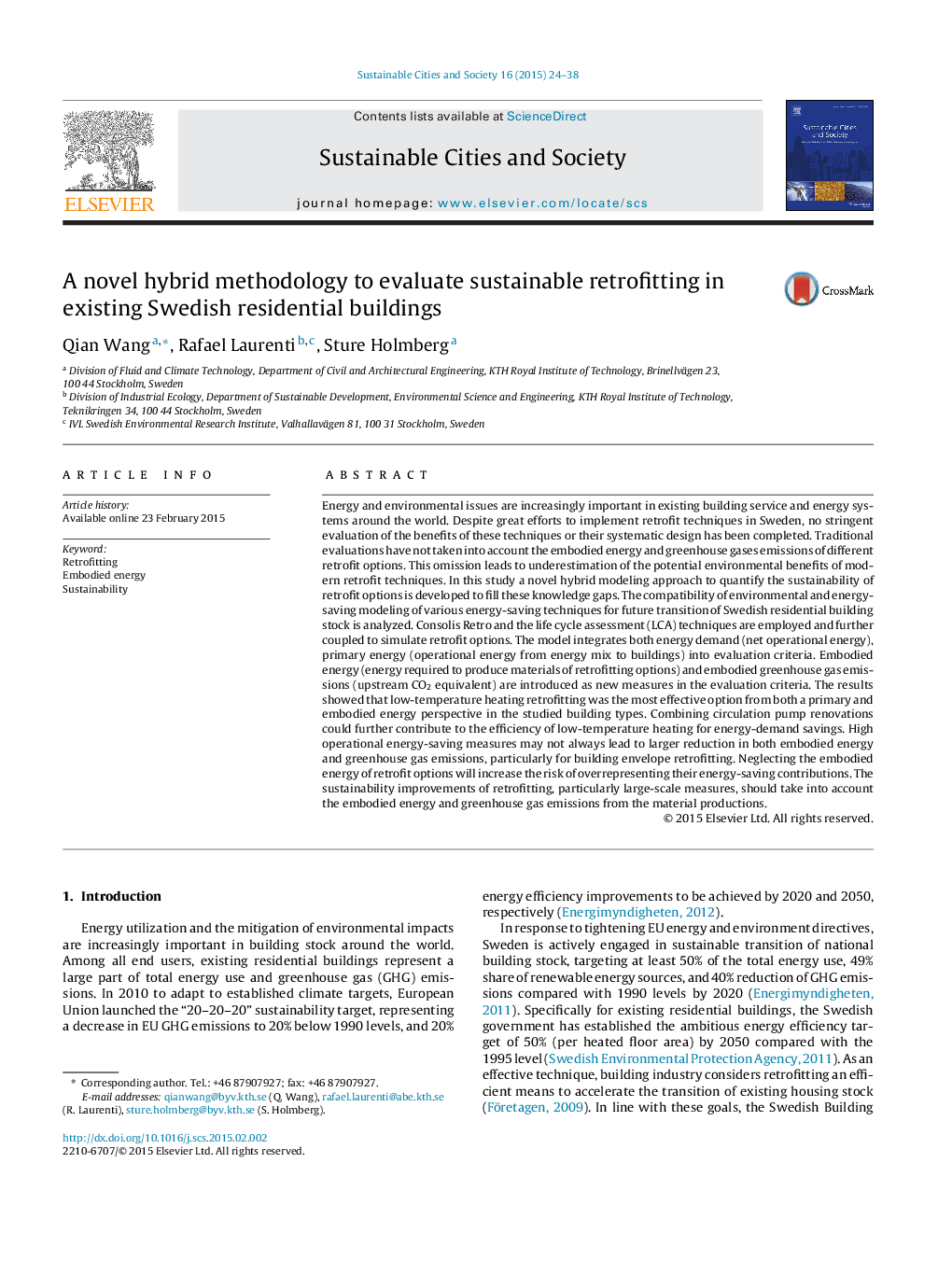| کد مقاله | کد نشریه | سال انتشار | مقاله انگلیسی | نسخه تمام متن |
|---|---|---|---|---|
| 308103 | 513523 | 2015 | 15 صفحه PDF | دانلود رایگان |
Energy and environmental issues are increasingly important in existing building service and energy systems around the world. Despite great efforts to implement retrofit techniques in Sweden, no stringent evaluation of the benefits of these techniques or their systematic design has been completed. Traditional evaluations have not taken into account the embodied energy and greenhouse gases emissions of different retrofit options. This omission leads to underestimation of the potential environmental benefits of modern retrofit techniques. In this study a novel hybrid modeling approach to quantify the sustainability of retrofit options is developed to fill these knowledge gaps. The compatibility of environmental and energy-saving modeling of various energy-saving techniques for future transition of Swedish residential building stock is analyzed. Consolis Retro and the life cycle assessment (LCA) techniques are employed and further coupled to simulate retrofit options. The model integrates both energy demand (net operational energy), primary energy (operational energy from energy mix to buildings) into evaluation criteria. Embodied energy (energy required to produce materials of retrofitting options) and embodied greenhouse gas emissions (upstream CO2 equivalent) are introduced as new measures in the evaluation criteria. The results showed that low-temperature heating retrofitting was the most effective option from both a primary and embodied energy perspective in the studied building types. Combining circulation pump renovations could further contribute to the efficiency of low-temperature heating for energy-demand savings. High operational energy-saving measures may not always lead to larger reduction in both embodied energy and greenhouse gas emissions, particularly for building envelope retrofitting. Neglecting the embodied energy of retrofit options will increase the risk of overrepresenting their energy-saving contributions. The sustainability improvements of retrofitting, particularly large-scale measures, should take into account the embodied energy and greenhouse gas emissions from the material productions.
Journal: Sustainable Cities and Society - Volume 16, August 2015, Pages 24–38
